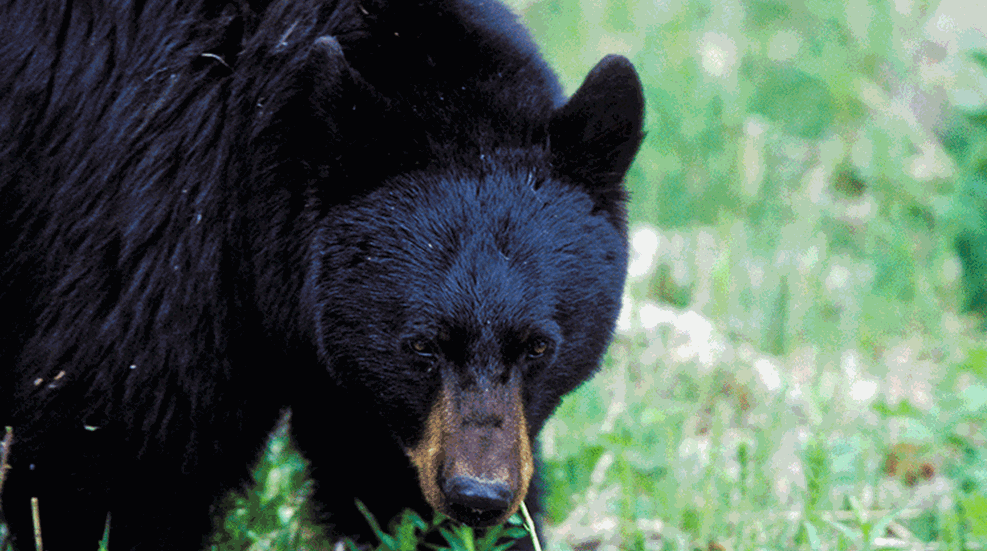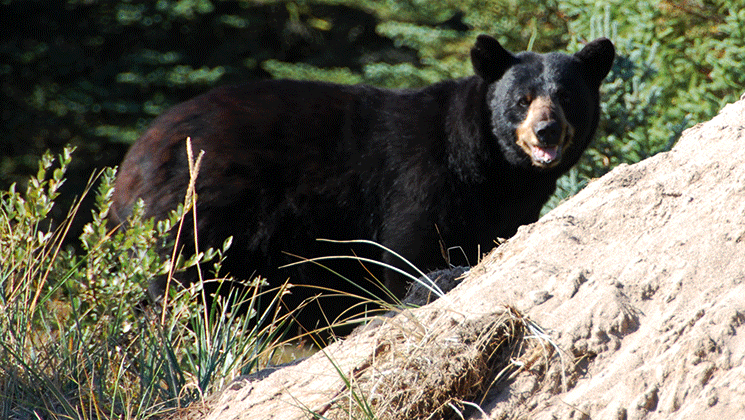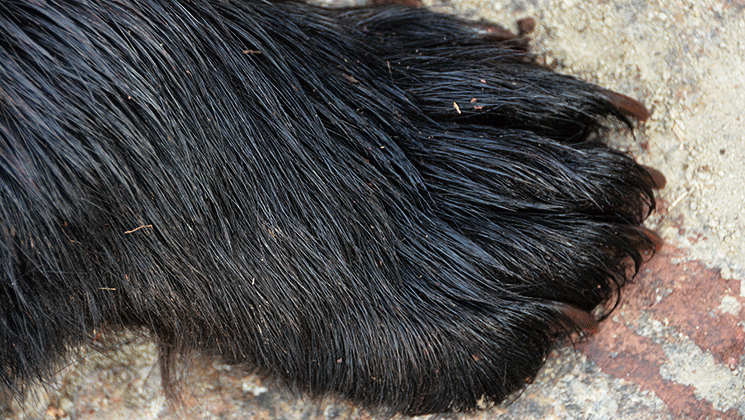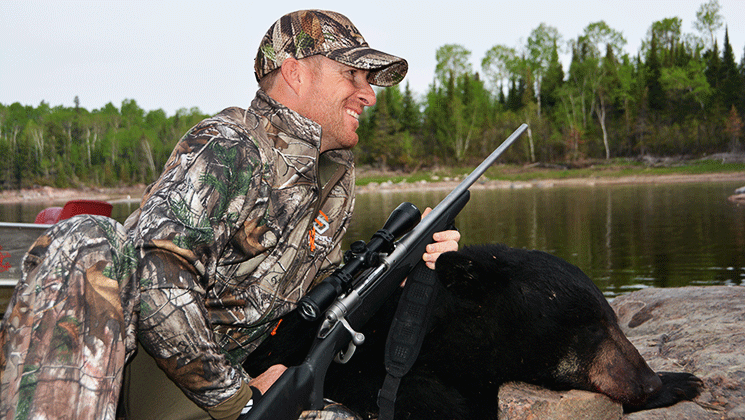
Deep down, almost every hunter wants the opportunity, at least once, to pursue an animal that’s capable of turning the tables on them. For most North American hunters, that animal is the black bear. Fortunately, the vast majority of black bear encounters are uneventful—black bears are typically shy and retiring by nature. However, they’re just unpredictable enough that under the right circumstances, they can become terrifyingly aggressive.
Coming equipped with the natural arsenal of weapons that black bear do, a close encounter with one always has the potential to be career-ending. It’s that very possibility, however remote, that brings a level of nervous excitement to black bear hunting. In my opinion, there are few hunts that bring out the adrenaline as does spot-and-stalk hunting for black bears. With every step closer, your heart rate inches up just a little, you find yourself breathing just a hair faster, and your mouth dries out just a touch more. Here are some tips to help you have a successful spot-and-stalk hunt.
It’s All About the Food
The way to a bear’s heart is through its stomach. Black bears are driven through much of the year by a demand for food—their movements and habits are dictated by a seemingly insatiable appetite. Whenever you see a bear, in fact, it’s likely doing one of two things: eating, or looking for something to eat. Locate quality food sources in good bear country and your odds for success go up logarithmically.
In the spring, much of a bear’s menu is made up of succulent plant material; particularly legumes, grasses, sedges and emerging buds, as these are the first foods available. Southern-facing slopes green up first—knowledgeable bear hunters concentrate there early in the season. Winter-killed moose, elk, deer and livestock are also sure to attract feeding bruins, as will residual crops that weren’t harvested the previous fall. In some areas, the newborn young of moose, deer and elk are another important food source. As fall approaches, foods become more diverse and scattered. Berries, acorns, fruits (especially apples), agricultural crops (including corn and oats) and fish all draw bears like magnets. Think about food availability in your area when determining where to hunt bruins.
Successful spot-and-stalk bear hunting is 90 percent spotting and 10 percent stalking. It may be self-evident, but it’s important to hunt areas with healthy bear populations, or it becomes a case of the proverbial needle in a haystack. Assuming you’re hunting an area with good numbers, the best jumping off points are where the terrain offers a vantage point from where to glass. Natural openings that allow you to peer into places where a bear might feed or move through in relative seclusion are helpful, as they are bears secretive animals by nature. Likely opportunities occur around abandoned farmyards, the edges of agricultural fields, along cutlines, forest clear-cuts, river or mountain valleys and on tidal flats. Most hunters spot on foot, however, along tidal flats or in river valleys, glassing from boats can be extremely effective.

Spotting
Bears may feed throughout the day, but they are most active in the early morning and in the last hours before dark. Get to high ground before you expect bears to be active and put the best optics you can afford to work. Quality 7X or 10X binoculars are ideal. Black bears are considerably more mobile in their feeding habits than are ungulates, so if you’re not seeing bruins in one location, move elsewhere.
Black bears are relatively easy to spot compared to other game. You’ll undoubtedly begin by focusing on every burned-out stump, dark rock and small shaded spot you see, but once you’ve identified your first bear, you’ll quickly get your sight image down and readily differentiate the real McCoy. Bears are simply darker and shinier than any inanimate object. In areas with healthy bear populations and concentrated food sources, spotting half a dozen or more bears per day is not uncommon.

Stalking
Once you’ve located a bear, you need to decide whether it’s worth stalking. Field judging can be challenging, and unfortunately there’s no easy substitute for experience. Mature bears can vary widely in terms of size—200-250 pounds is probably about average, but 400- and even 500-pound bears turn up on occasion. As with most animals, when you see a really big one, you’ll know it. It’s the average-sized bears that are difficult to discern from smaller ones.
One key feature experienced hunters look for is a bear’s ears. On large bears, the ears look small and widely-spaced. Mature bears also tend to have large, square, stovepipe-like snouts, while those of younger bears and sows will appear longer and more pointed. Big bruins also appear to swagger and waddle when they walk, with widely spaced legs.
If you find tracks, the rule of thumb is that the width of the front pad in inches, plus one, roughly equals the bear’s squared hide measurement. Anything over five and a half feet is reasonable, and any bear that squares over six feet is a dandy, wherever black bears are found.
Bears survive on the acuity of their sensitive noses and ears. Their eyesight is marginal, and while they’re by no means blind, if you successfully manage your scent and noise, you can generally stalk to within shooting range. Because bears are prone to moving as they feed, once you’ve made the decision to engage in a stalk, you should close the distance as quickly as common sense and conditions allow. You absolutely must have a favorable wind, as one faint sniff of man and most bruins instantly melt into thick cover. Be equally as attentive to unnecessary noise—a mature bruin knows immediately which sounds belong in its habitat and which don’t.
The key to your stalk will be determining how close is close enough. The bear’s movements and available cover will largely provide the answer. I like to be within 100 yards, preferably much closer, but there are times when you have no choice but to take a longer shot. While relatively thin-skinned, bears are heavy boned and tough—you want to ensure an accurate shot that anchors them as quickly as possible.
Calling using dying rabbit or fawn bleats can be an interesting addition to spot-and-stalk black bear hunting. Experience has taught me that persistence is key, and even where bear populations are dense, calling has a relatively low likelihood of success. I prefer to call to bears that I can see, but others have told me they’ve had success calling “blind” in habitats they know to hold bruins. If you do elect to call blind, when you first see your bear it’s likely going to be at a pretty close distance, so be forewarned.

Guns and Loads
As usual, there’s lively debate about what’s suitable among rifles and cartridges for bears. Over the years I’ve taken black bears with shotguns, blackpowder rifles and centerfire rifles. All can be effective when spot-and-stalk hunting, but the first two have limitations.
With slugs, it’s bullet energy and accuracy over extended distances. With blackpowder, the absence of quick follow-up shots should be considered. Most spot-and-stalk bear hunters select centerfire rifles, with any cartridge in the upper end of suitable deer calibers being adequate. In my opinion, the .270 Win. is at the lower end of appropriate cartridges. The concern with black bears is that wherever they exist, there’s the potential for a really big one, and a 400-pound bruin is a world away from a 200-pound specimen. As such, I would say .30 caliber and larger cartridges are much more suited for spot-and-stalk black bear hunting. As to bullets, if you select a well-constructed, heavy-for-caliber bullet (i.e. 200 grain in .30-06), you should have no problems.
Black bears are fascinating, beautiful and at times frightening animals—hunting them spot-and-stalk style only adds to the excitement and challenge. Further, there’s always that slim chance that the hunter will become the hunted. Deep down, I think many hunters want to experience that challenge.




































